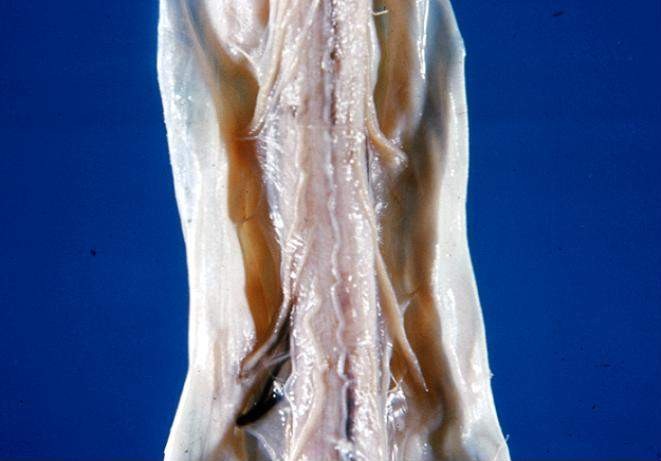
(Photo : Wikimedia Commons/John A Beal)
An evolutionary device could be the new way to treat spinal cord injuries. A group of experts designed the new wraparound spinal implants.
New Treatment For Spinal Cord Developed
A team of engineers, neuroscientists, and surgeons from the University of Cambridge designed a novel method to treat spinal injuries, which can result in severe impairment and paralysis. They developed a small, flexible electronic device that wraps around the spinal cord.
The devices were used to record the nerve signals that travel from the spinal cord to the brain. In contrast to existing methods, the new wraparound electronic devices can capture 360-degree data, providing a comprehensive view of spinal cord activity.
"Most technologies for monitoring or stimulating the spinal cord only interact with motor neurons along the back or dorsal, part of the spinal cord," said Dr. Damiano Barone from the Department of Clinical Neurosciences, who co-led the research. "These approaches can only reach between 20 and 30 percent of the spine, so you're getting an incomplete picture."
The devices could also stimulate limb movement and avoid total spinal cord injuries, in which all brain-spinal cord communication had been entirely severed, according to tests performed on human cadaver models and living animals.
The majority of modern spinal injury treatments entail high-risk operations such as implanting devices in the brain and piercing the spinal cord with electrodes. Treatments for spinal injuries without brain surgery would be significantly safer for patients if the Cambridge-developed gadgets proved successful.
The devices may prove helpful in the near future for monitoring spinal cord activity during surgery, even if such therapies are still years away, according to the researchers. A better understanding of the spinal cord needs to be developed to improve current treatments.
ALSO READ: Neuralink's First In-Human Brain Implant Encounters Issue But It Doesn't Pose Direct Risk to Patient
About The Wraparound Implant Electronic Device
The biocompatible devices created by Cambridge are manufactured with sophisticated photolithography and thin film deposition techniques and require very little power to operate. They are only a few millionths of a meter thick.
The gadgets record the signals by intercepting the ones that are sent down the spinal cord's axons or nerve fibers. Because the devices are tiny, they can record impulses without harming the nerves because they don't go through the spinal cord.
To ensure that the devices could be slid under the spinal cord without harming it, an alteration to a standard surgical process was used to implant them. The devices were effectively used by the researchers to induce limb movement in experiments conducted on rat models.
The gadgets exhibited extremely low latency, meaning their response time was nearly identical to a human reflex. They can be effectively implanted in humans based on the additional testing conducted on human cadaver models.
According to the researchers, their strategy may alter how spinal injuries are handled in the future. The Cambridge researchers point out that while both spinal and brain implants are used in current attempts to treat spinal injuries, brain implants may not be required.
RELATED ARTICLE: Implantable Nanofluidic Device Smaller Than a Rice Grain Can Shrink Pancreatic Tumors [Study]
Check out more news and information on Implantable Device in Science Times.












![Mars Faces Three Times More Potentially Hazardous Asteroids Than Earth [Study]](https://1721181113.rsc.cdn77.org/data/thumbs/full/53711/258/146/50/40/mars-faces-three-times-more-potentially-hazardous-asteroids-than-earth-study.jpeg)

